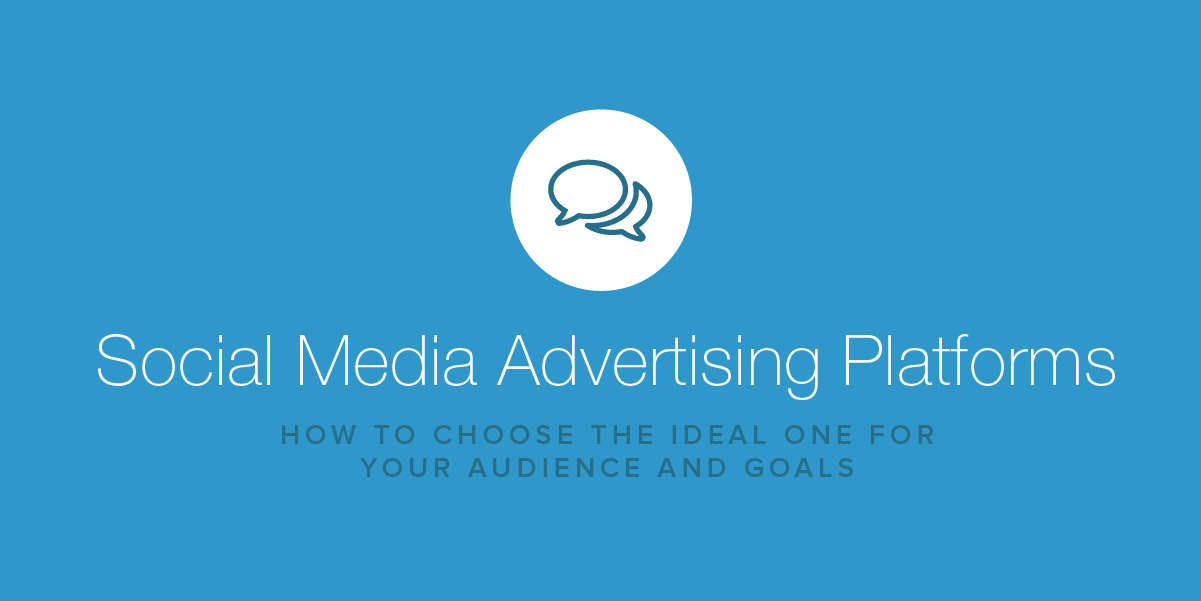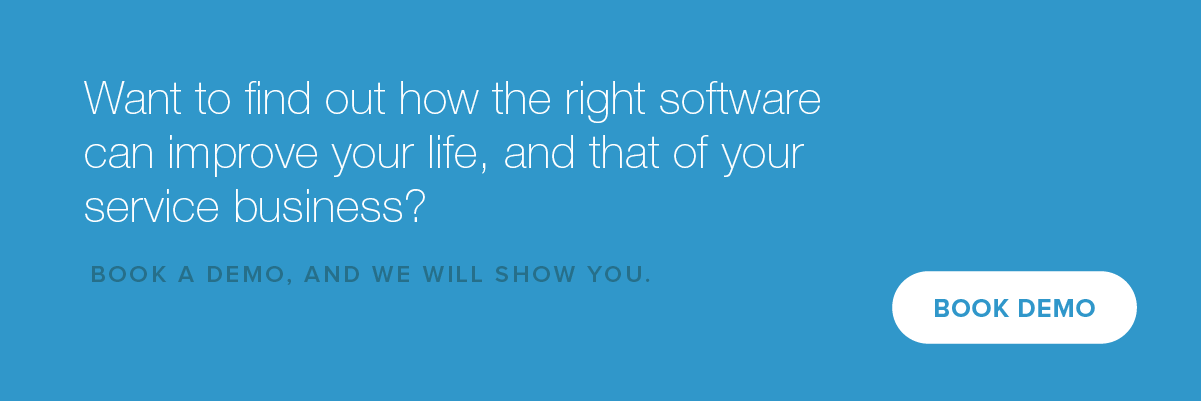Choosing a Social Media Advertising Platform for Your Audience and Goals
- September 12, 2018
- By: Vonigo
This article about social media advertising platforms is by Ryan Gould, Vice President of Strategy and Marketing Services at Elevation Marketing.
A Guide to Social Media Advertising Platforms
When it comes to advertising your mobile service business online, there is no shortage of channels to choose from. From Facebook and Twitter to Instagram and Pinterest, you have a big choice to make: Which social media advertising platform are you going to invest in to drive paying customers your way?
The channels you decide upon are critically important because each will require lead time before you see any substantial ROI. You’d really hate to waste your time on a channel that’s not producing, wouldn’t you? Understandably so, and for that reason, we have put together a list of social ad platforms below.
Depending on your type of business and the audience you hope to attract, use one or more of these popular platforms to help your mobile service business succeed.
Conduct the Necessary Research
One of your first responsibilities is to find out where your audience is most concentrated online. How often do they use social media and which platforms specifically? What social groups do they belong to? This is required information so that you can maximize your social media advertising budget.
Here is what you should know about each channel so that you can boost the results of the next ad you create.

Considered the universal social media network, Facebook boasts of more than 2 billion monthly users, giving you access to potentially large numbers of your target population.
Facebook will help you create the ideal ad by asking about your ad objectives, whether you’re attempting to boost awareness, consideration, or conversions. Facebook will then ask about your audience, allowing you to customize your outreach based on users’ ages, genders, languages, interests, and behaviors, among others.
You can use a current post as an advert or you can create a new one. The options available include carousel (which is an advert with two or more scrollable images or videos), single image, single video, slideshow, and canvas (which allows for more immersive media-rich stories).
Tactics for Facebook
As far as ad placement on the screen when viewed by prospects, Facebook gives you a variety of options here, too. There’s Feeds, Instant Articles, In-Stream Video, Right Column, and Marketplace.
The good news for mobile service business owners is that Facebook excels when it comes to generating leads. The most common model used by Facebook advertisers is to create a Facebook ad that clicks-through to a highly-converting landing page that offers a free lead magnet or special offer, like a first-time customer discount.
Facebook Pricing
AdEspresso conducted a study that showed the average cost per click (CPC) to be around $.28 and the cost per 1,000 impressions or CPM came out to around $7.19. Keep in mind this is for all businesses, not just mobile service businesses, but can give you an idea of what you’ll be facing when advertising on the Facebook.
The 65+ age group showed the most continuous trend of lowering CPC costs, and females cost an average of $.04 greater CPC than males.
Facebook makes it easy to create an ad, identify your target audience and set up retargeting for those who land on your website but don’t convert. When creating your ads, ensure you run different ads for each of your audiences. Even your prospecting and retargeting ads should be different.
The best ads for service businesses include those that successfully educate your audience about your offerings. Retargeting ads should have an aggressive pitch and offer discounts to break the ice and get prospects to call.
This visual-centric social platform boasts more than 500 million monthly active users and is terrific for B2C engagement. Instagram also has one of the highest engagement rates in social media, nearly 60% higher than Facebook and 2000% higher than Twitter.
Instagram is ideal for users in the 18 to 29 age range with heavy use by females and minorities. Instagram ads can be made to link directly to a landing page, allowing for direct engagement with your mobile service offerings.
It’s reported that Facebook and Instagram have similar social media advertising costs, with Instagram slightly less at $5 per thousand impressions (CPM). However, some stats show that Instagram experiences more engagement on their ads than Facebook. Something to think about when deciding on your mobile service advertising channel.
Lists and Audiences on Instagram
Facebook owns Instagram, so you can expect the ad creation process to be straightforward for both platforms. To boost the effects of your ads, focus on custom audiences. You may segment your audiences by their service needs or preferences. This can be done through pixel tracking or through your email list. In addition, ensure you have a segmented list of those who have engaged with you in the past, as those are most likely to perform best.
Lookalike audiences can help you piggyback off the audiences of similar brands but use these segments sparingly so as not to dilute your brand’s reach and engagement.
Custom images of real people tend to work best on Instagram, and Facebook for that matter, but your ad must be compelling. Offer discounts and use hashtags keep your ads top-of-mind for your target audience.
With 328 million monthly users, Twitter remains one of the most popular social media channels. Unlike other social networks, Twitter is still viable for organic engagement, especially with B2C organizations like mobile service businesses.
When it comes to paid ads, you have a few choices. You can choose a promoted account, promoted tweet, promoted trends, or a website card. You can also target users based on a variety of criteria, including existing followers, users similar to your followers, tailored audiences, keyword-based audiences, and other demographic segments focused on gender, age, language, and location.
Testing Your Twitter Ads
When creating Twitter ads, experiment with the various options available to you and always use a relevant and compelling image. The latter is good advice for all social media advertising. The images you use should give context, fit your brand, and draw the attention simultaneously.
Remember, Twitter is all about concise communication, so use a few words and actionable CTAs to drive prospects to call and get a quote for your mobile service offering.
Pinterest is also good for B2C and consists of mostly 18 to 45, almost all female. The user base is smaller than other social networks, but that could soon change. The fans that do frequent Pinterest tend to be fiercely loyal and consistent. In fact, 25% of Pinterest users log-in daily and 31% use it on a weekly basis. The good news for mobile service business owners is that nearly 90% of pinners have made a purchase because of Pinterest.
The unfortunate news is that Pinterest offers an average CPC of $1.52 and a CPM of $5.30, at least according to one user.
There are several advertising options on Pinterest. There’s the Promoted Pin, which allows you to showcase any Pinterest post you create; Promoted Video Pin, which puts your video marketing content front and center for viable prospects; Promoted App Pin, which lets you advertise your latest app; and then there are Rich Pins, which offer much more enticing information for buyers.
Types of Paid Pins
Rich Pins include metadata and provide critical details for Pinterest users. There are paid pins for recipes, articles, products, and apps.
It’s too early to report on the effectiveness of Pinterest advertising, but you are encouraged to test these out if your audience tends to frequent Pinterest on a regular basis.
When creating Pinterest ads, be creative. Make your promoted pins stand apart from the rest of the pack. Use lots of colors and focus on current trends. Also, don’t forget that Pinterest has its own search engine. Be sure to include a long and detailed description using keywords and hashtags within your ads.
Considerations When Creating Ads
Now you have some insight into the various social advertising platforms available to you. Your job now is to develop a consistent and engaging ad campaign that yields the highest return. First, figure out what you’re trying to advertise. Are you attempting to draw attention to your latest service offering or all of them? What is the purpose of your ad? Are you attempting to generate more awareness for a particular audience segment? Or are you attempting to reach all of your buyer personas? What brand “look and feel” do you want your ads to have?
The answers to these questions will help you develop a social brand strategy that brings more local clients your way.
Find out where your audience congregates and advertise on those social channels. There are others out there, including LinkedIn and Snapchat, but the above tend to work best for mobile service businesses.
As an added tip, make your social ads engaging by infusing your personality into every single one. This will make your ads more memorable so that you get the most bang for your mobile service advertising buck.
 Ryan Gould is the Vice President of Strategy and Marketing Services for Elevation Marketing. A strategic marketing and branding expert, Ryan helps Elevation’s clients solve their problems and achieve their business goals. Elevation uses integrated marketing solutions distinguished by research, storytelling, engagement, and conversion. He has a proven track record of energizing brands and having worked with a variety of Fortune 500 companies. Ryan is a respected expert in achieving consistent results through creative design, thought-provoking narratives, and innovative problem-solving.
Ryan Gould is the Vice President of Strategy and Marketing Services for Elevation Marketing. A strategic marketing and branding expert, Ryan helps Elevation’s clients solve their problems and achieve their business goals. Elevation uses integrated marketing solutions distinguished by research, storytelling, engagement, and conversion. He has a proven track record of energizing brands and having worked with a variety of Fortune 500 companies. Ryan is a respected expert in achieving consistent results through creative design, thought-provoking narratives, and innovative problem-solving.
Want to learn more about how to grow your business and increase your bookings, using software designed for service businesses? Book a free, private demo of Vonigo.




